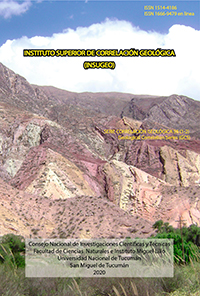Serie Correlación Geológica 36
Variation in Tsunami Wave-Heights Due to Coastal Topography and Impact of Rock Boulders on Inundation: A Case Study of 2004 Indian Ocean Tsunami Along the Pondicherry Coast
Mounica Jakkula | Kirti Srivastava
Descargar trabajo en formato PDFResumen
VARIACIÓN EN LAS ALTURAS DE LAS OLAS DEL TSUNAMI DEBIDO A LA TOPOGRAFÍA COSTERA Y EL IMPACTO DE LOS CANTOS RODADOS EN LA INUNDACIÓN: UN ESTUDIO DE CASO DEL TSUNAMI DEL OCÉANO ÍNDICO DE 2004 A LO LARGO DE LA COSTA DE PONDICHERRY. El 26 de diciembre de 2004 la ciudad de Pondicherry, ubicada en la costa sureste de la India, se vio afectada por un tsunami. Regiones aledañas a lo largo de la costa no experimentaron inundaciones ni daños, situación que es valorada en el presente trabajo. Se estudiaron tres regiones a lo largo de la costa de Pondicherry a saber: (1) Playa de Auroville, (2) Calle costera, y (3) Playa Paraiso mediante el método de combinación de datos SRTM, CMAP y GEBCO, a través de información topográfica y batimétrica de alta resolución. La altura de las olas del tsunami y la extensión de la inundación se calculan utilizando el modelo TUNAMI N2 en la región de estudio. Se observa que las estructuras en la Calle costera de Pondicherry estaban intactas y casi no se produjeron inundaciones en esta región debido a los cantos rodados situados a lo largo de la costa durante el tsunami del Océano Índico de 2004. También se estudiaron lasplayas de Auroville (que tiene una pendiente pronunciada), y Paradise (que es relativamente plana) en relación a las alturas de las olas y el alcance de las inundaciones. Se considera que el malecón de la misma altura que los cantos rodados de las playas previas dan pauta de las fuerzas de oleaje. Los resultados revelan que las alturas de las olas del tsunami y la inundación en la playa de Auroville es mucho menor que en la playa Paradise, mientras que no hubo inundaciones a lo largo de la Calle Costera, destacándose que el uso de cantos rodados a lo largo de áreas costeras pobladas puede minimizar los daño debido a tsunamis.
Abstract
Variation in Tsunami Wave-Heights Due to Coastal Topography and Impact of Rock Boulders on Inundation: A Case Study of 2004 Indian Ocean Tsunami Along the Pondicherry Coast Pondicherry located on the southeast coast of India was largely affected by the 26 Dec 2004 tsunami. However, a few regions along the Pondicherry coast did not experience any inundation/damage. In this study, we have considered three regions along the Pondicherry coast, namely (1) Auroville Beach (2) Beach Road, and (3) Paradise Beach. Combining SRTM, CMAP, and GEBCO data a high resolution topographic and bathymetric data is acquired for the study region. Tsunami wave heights and inundation extent is calculated using the TUNAMI N2 model in the study region. It is observed that the structures on the Beach Road of Pondicherry were untouched and almost no inundation occurred in this region due to the rock boulders situated along the coast during the 2004 Indian Ocean Tsunami. The Auroville Beach, having a steep slope, and the Paradise Beach, which is relatively flat is also studied for the tsunami wave-heights and inundation due to the variation in their topography. A sea wall of the same height as the boulders is considered to estimate the inundation along the Beach Road. Also, the surge forces are calculated along the sea wall. Results reveal that the tsunami wave heights and inundation at Auroville beach are much less than the Paradise beach, whereas there was no inundation along the Beach Road. Usage of rock boulders along populated coastal areas can minimize the damage due to tsunami.






